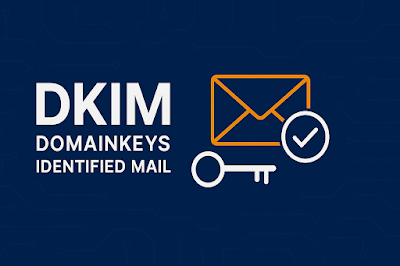Building on SPF (As explained in my last article.), let's dive into DomainKeys Identified Mail, or DKIM, another vital email authentication protocol that ensures your emails haven't been tampered with and are genuinely from your domain.
What is DKIM? DKIM uses digital signatures to verify that an email was sent from an authorized domain and its content remains intact during transit. Unlike SPF, which checks sender IPs, DKIM focuses on the email's integrity and authenticity, complementing SPF for robust security.
How Does DKIM Work? DKIM works by attaching a digital signature to each outgoing email, created with a private key held by the sender's domain. The corresponding public key is published in the domain's DNS as a TXT record. When received, the mail server verifies the signature using the public key, ensuring the email hasn't been altered and comes from the claimed domain.
Setting Up DKIM Implementing DKIM involves:
- Generating a key pair using tools like OpenSSL.
- Publishing the public key in DNS, e.g., a record like "selector._domainkey.example.com" with the key.
- Configuring your mail server (e.g., Postfix, Sendmail) to sign outgoing emails with the private key.
- Testing with tools like [Mailgun]([invalid url, do not cite]) to verify signatures in email headers.
Benefits of DKIM
- Ensures email content integrity, preventing tampering.
- Confirms sender authenticity, reducing spoofing risks.
- Enhances deliverability by building trust with receiving servers.
Challenges and Considerations
- Key management is crucial; rotate keys regularly to prevent compromise.
- Ensure all third-party services sign emails, which can be challenging.
- Mailing lists or forwarders may alter emails, invalidating signatures; use the "l=" tag to mitigate.
Conclusion DKIM is essential for securing email integrity, working hand-in-hand with SPF.
In our next article, we'll explore DMARC, which ties SPF and DKIM together for comprehensive protection. Stay tuned!







No comments:
Post a Comment